
You may remember being served pork chops when you were younger that were cooked until there wasn't an ounce of moisture left in them. Dried-out pork chops weren't necessarily a reflection of the cook's talents, but more an attempt to prevent the scary-sounding illnesses associated with eating undercooked pork. Pork chops are a cut originating from the pork loin, between the pig's shoulder and hip. While bacteria and foodborne illness are still factors, the rules have changed.
It's All About Safety
Just as in previous decades, safety is always the primary concern when cooking pork chops. But now you can cook your chops so there is a hint of pink in the center and have them be perfectly safe. FoodSafety.gov, the U.S. government's website on safe food handling, recommends cooking fresh pork to an internal temperature of 145 degrees Fahrenheit, with three minutes of rest time afterward. The easiest way to determine if you've reached the temperature is to insert a meat thermometer into the thickest part of the pork chop and read the result. Focus on the temperature and not the color of the meat.
Chop Rundown
You'll find a handful of different types of pork chops in a typical pork loin. Some of the more common cuts include loin chops, blade chops, rib chops, top loin or "center cut chops" and sirloin chops. Regardless of the type of pork chop you cook, the same safety rules apply. After a few times, you will likely become proficient at being able to tell a specific chop's level of doneness by feel, but when you're starting out, use the thermometer to be sure.
Bone-In or Bone-Out
Depending on the type of pork chop you choose, the thickness may range from 1/2 inch all the way to 2 inches. You can also choose to have your chops cut with the bone-in or bone-out. Boneless pork chops are more convenient when it comes to serving and eating, but bone-in chops usually look more attractive on the plate. The thickness is the determining factor on how long it will take to cook the chop to the right temperature.
Keeping Them Moist
Whether you've had to suffer through dried-out pork chops at any point in your life or not, there is no reason for it to happen now. Moist pork chops are achieved by not over-cooking them, and you can create the ideal chop through virtually any method of cooking, as long as you follow the temperature guideline. This includes pan searing and finishing them in the oven, cooking them all the way through on the stovetop in a skillet or preparing them on your grill.
Related Articles

Secrets to Tender Breaded Pork Chops
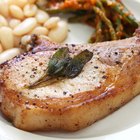
How to Grill Iowa Chops

Can Lamb Chops Be Pink in the Middle?

How to Tell When Beef Roast is Done by ...

How to Cook Thick Cut Lamb Loin Chops
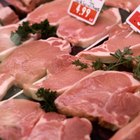
Types of Pork Chops
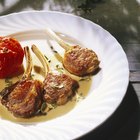
The Proper Way to Eat Lamb Chops

Temperature of a Medium-Well Hamburger
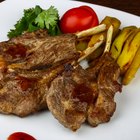
Rib Vs. Loin Grilled Lamb Chop

What Cooks Faster: Bone-In or Boneless ...

How to Cook Rib Eye Steak in an ...

How to Cook a Standing Rib With the ...

How to Grill a Ribeye on a Weber Q

What Is the Fastest Way to Cook Baked ...
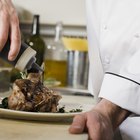
How Long Do You Cook Pork Chops in the ...
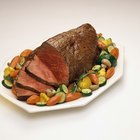
Internal Temp of Rare Roast Beef
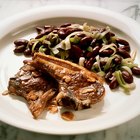
Cooking Instructions for Lamb Chops
How to Cook Double Thickness Rib Lamb ...
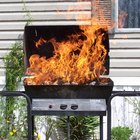
How Hot Should a Gas Grill Get?
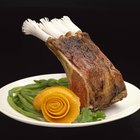
What Are the Differences Between Lamp ...
References
Writer Bio
Joshua McCarron has been writing both online and offline since 1995. He has been employed as a copywriter since 2005 and in that position has written numerous blogs, online articles, websites, sales letters and news releases. McCarron graduated from York University in Toronto with a bachelor's degree in English.
Photo Credits
Jupiterimages/Photos.com/Getty Images